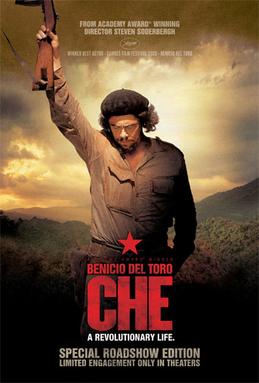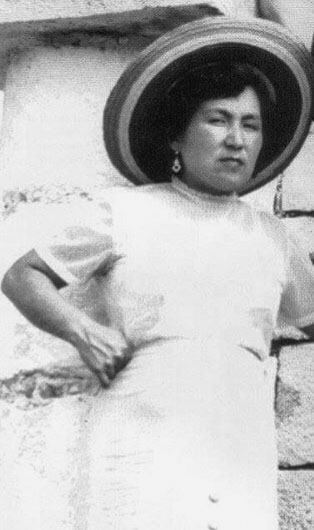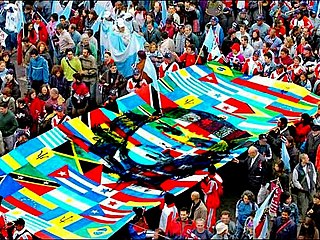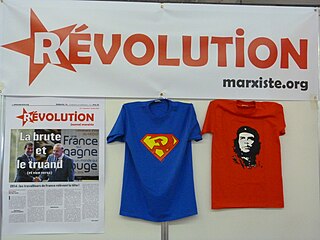
A T-shirt is a style of fabric shirt named after the T shape of its body and sleeves. Traditionally, it has short sleeves and a round neckline, known as a crew neck, which lacks a collar. T-shirts are generally made of stretchy, light, and inexpensive fabric and are easy to clean. The T-shirt evolved from undergarments used in the 19th century and, in the mid-20th century, transitioned from undergarments to general-use casual clothing.

Hip-hop fashion refers to various styles of dress that originated from Urban Black America and inner city youth in cities like New York City, Atlanta, and Los Angeles. Being a major part of hip hop culture, it further developed in other cities across the United States, with each contributing different elements to the overall style that is now recognized worldwide.

Alberto Díaz Gutiérrez, better known as Alberto Korda or simply Korda, was a Cuban photographer, remembered for his famous image Guerrillero Heroico of Argentine Marxist revolutionary Che Guevara.

The Motorcycle Diaries is a 2004 biopic about the journey and written memoir of the 23-year-old Ernesto Guevara, who would several years later become internationally known as the Marxist guerrilla leader and revolutionary leader Che Guevara. The film recounts the 1952 expedition, initially by motorcycle, across South America by Guevara and his friend Alberto Granado. As well as being a road movie, the film is a coming-of-age film; as the adventure, initially centered on youthful hedonism, unfolds, Guevara discovers himself transformed by his observations on the life of the impoverished indigenous peasantry. Through the characters they encounter on their continental trek, Guevara and Granado witness first hand the injustices that the destitute face and are exposed to people and social classes they would have never encountered otherwise. To their surprise, the road presents to them both a genuine and captivating picture of Latin American identity. As a result, the trip also plants the initial seed of radicalization within Guevara, who would later challenge the continent's endemic economic inequalities and political repression.

James Fitzpatrick is an Irish artist. He is best known for elaborately detailed work inspired by the Irish Celtic artistic tradition. However, his most famous single piece is a two-tone portrait of Che Guevara created in 1968, based on a photo by Alberto Korda.

The Motorcycle Diaries is a posthumously published memoir of the Marxist revolutionary Ernesto "Che" Guevara. It traces his early travels, as a 23-year-old medical student, with his friend Alberto Granado, a 29-year-old biochemist. Leaving Buenos Aires, Argentina, in January 1952 on the back of a sputtering single cylinder 1939 Norton 500cc dubbed La Poderosa, they desired to explore the South America they only knew from books. During the formative odyssey Guevara is transformed by witnessing the social injustices of exploited mine workers, persecuted communists, ostracized lepers, and the tattered descendants of a once-great Inca civilization. By journey's end, they had travelled for a "symbolic nine months" by motorcycle, steamship, raft, horse, bus, and hitchhiking, covering more than 8,000 kilometres (5,000 mi) across places such as the Andes, the Atacama Desert, and the Amazon River Basin.

Aleida March Torres is a Cuban revolutionary who was Ernesto "Che" Guevara's second wife, and a member of Fidel Castro's Cuban army.

Che is a two-part 2008 biographical film about Argentine Marxist revolutionary Ernesto "Che" Guevara, directed by Steven Soderbergh. Rather than follow a standard chronological order, the films offer an oblique series of interspersed moments along the overall timeline. Part One is titled The Argentine and focuses on the Cuban Revolution from the landing of Fidel Castro, Guevara, and other revolutionaries in Cuba to their successful toppling of Fulgencio Batista's dictatorship two years later. Part Two is titled Guerrilla and focuses on Guevara's attempt to bring revolution to Bolivia and his demise. Both parts are shot in a cinéma vérité style, but each has different approaches to linear narrative, camerawork and the visual look. It stars Benicio del Toro as Guevara, with an ensemble cast that includes Demián Bichir, Rodrigo Santoro, Santiago Cabrera, Franka Potente, Julia Ormond, Vladimir Cruz, Marc-André Grondin, Lou Diamond Phillips, Joaquim de Almeida, Édgar Ramírez, Yul Vazquez, Unax Ugalde, Alfredo De Quesada, and Oscar Isaac.

Aleida Guevara March is a Cuban physician who is the eldest of four children born to Ernesto "Che" Guevara and his second wife, Aleida March.

The fashion of the 2000's is often described as a global mash up, where trends saw the fusion of vintage styles, global and ethnic clothing, as well as the fashions of numerous music-based subcultures. Hip-hop fashion generally was the most popular among young people of all sexes, followed by the retro inspired indie look later in the decade.
Appearances of Argentine Marxist revolutionary Che Guevara (1928–1967) in popular culture are common throughout the world. Although during his lifetime he was a highly politicized and controversial figure, in death his stylized image has been transformed into a worldwide emblem for an array of causes, representing a complex mesh of sometimes conflicting narratives. Che Guevara's image is viewed as everything from an inspirational icon of revolution, to a retro and vintage logo. Most commonly he is represented by a facial caricature originally by Irish artist Jim Fitzpatrick and based on Alberto Korda's famous 1960 photograph titled Guerrillero Heroico. The evocative simulacra abbreviation of the photographic portrait allowed for easy reproduction and instant recognizability across various uses. For many around the world, Che has become a generic symbol of the underdog, the idealist, the iconoclast, or the martyr. He has become, as author Michael Casey notes in Che's Afterlife: The Legacy of an Image, "the quintessential postmodern icon signifying anything to anyone and everything to everyone."

Hilda Gadea Acosta was a Peruvian economist, Communist leader, and author. She was the first wife of Che Guevara.

Radical chic is the fashionable practice of upper-class people associating with politically radical people and causes. Coined in the 1970 article "Radical Chic: That Party at Lenny's" by journalist Tom Wolfe, the term has become widely used in languages such as American English, French, and Italian. Unlike dedicated activists, revolutionaries, or dissenters, those who engage in "radical chic" remain frivolous political agitators—ideologically invested in their cause of choice only so far as it advances their social standing.

Ernesto "Che" Guevara was an Argentine Marxist revolutionary, physician, author, guerrilla leader, diplomat, and military theorist. A major figure of the Cuban Revolution, his stylized visage has become a ubiquitous countercultural symbol of rebellion and global insignia in popular culture.

Orlando Borrego is a Cuban economist, writer and former guerrilla who worked with Che Guevara during the Cuban Revolution.

The legacy of Argentine Marxist revolutionary Che Guevara is constantly evolving in the collective imagination. As a symbol of counterculture worldwide, Guevara is one of the most recognizable and influential revolutionary figures of the twentieth century. However, during his life, and even more since his death, Che has elicited controversy and wildly divergent opinions on his personal character and actions. He has been both revered and reviled, being characterized as everything from a heroic defender of the poor, to a cold-hearted executioner.
Ernesto "Che" Guevara, was an Argentine Marxist revolutionary, politician, author, intellectual, physician, military theorist, and guerrilla leader. His life, legacy, and ideas have attracted a great deal of interest from historians, artists, film makers, musicians, and biographers. In reference to the abundance of material, Nobel Prize–winning author Gabriel García Márquez has declared that "it would take a thousand years and a million pages to write Che's biography."

Guerrillero Heroico is an iconic photograph of Marxist revolutionary Che Guevara taken by Alberto Korda. It was captured on March 5, 1960, in Havana, Cuba, at a memorial service for victims of the La Coubre explosion. By the end of the 1960s, the image, in conjunction with Guevara's subsequent actions and eventual execution, helped solidify the leader as a cultural icon. Korda has said that at the moment he shot the picture, he was drawn to Guevara's facial expression, which showed "absolute implacability" as well as anger and pain. Years later, Korda would say that the photograph showed Che's firm and stoic character. Guevara was 31 years old at the time the photograph was taken.
Chevolution is a 2008 documentary film which examines the history and legacy of the photo Guerrillero Heroico taken by famous Cuban photographer Alberto Díaz Gutiérrez. This image has thrived for the decades since Che Guevara's death and has evolved into an iconic image, which represents a multitude of ideals. The documentary explores the story of how the photo came to be, its adoption of multiple interpretations and meanings, as well as the commercialization of the image of Ernesto "Che" Guevara.

Communist chic are elements of popular culture such as fashion and commodities based on communist symbols and other things associated with Marxism, Leninism, socialism and communism. Typical examples are T-shirts and other memorabilia with Alberto Korda's iconic photo of Che Guevara.

















